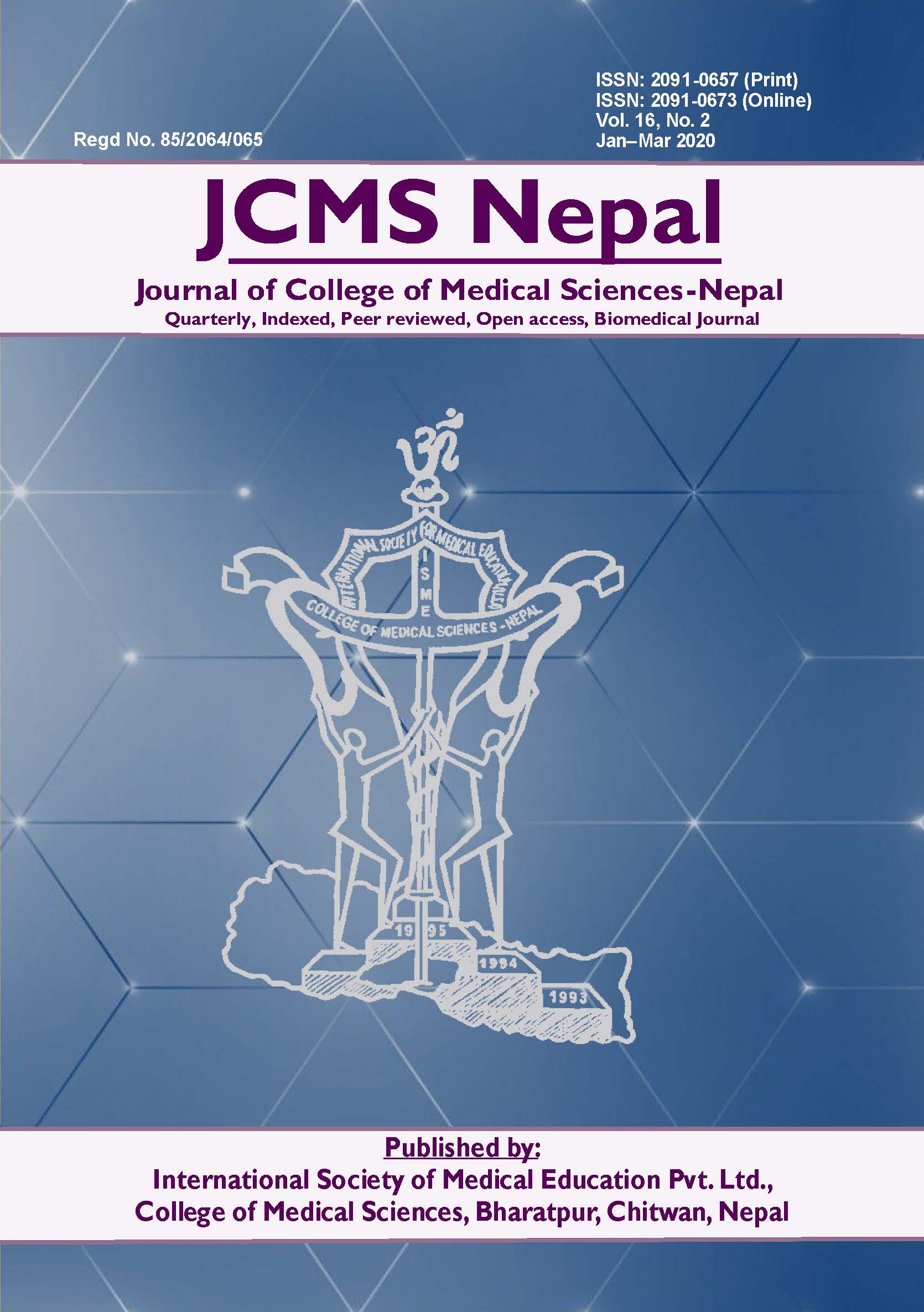Status of Anemia among Undergraduate Students of a Medical College of Central Nepal
DOI:
https://doi.org/10.3126/jcmsn.v16i2.25652Keywords:
anemia, hemoglobin, medical students, undergraduateAbstract
Background: Anemia is a public health concern with adverse health consequences. The vast nature of medical curriculum demands rigorous efforts and stress putting health science students at risk of anemia. In the present study, we aim to estimate the hemoglobin level of undergraduate health science students at Chitwan Medical College.
Methods: This cross-sectional study included all 386 year I and II undergraduate health science students enrolled at Chitwan Medical College. An informed consent was obtained from all the participants and hemoglobin values were obtained using Sahli’s hemoglobinometry at Physiology laboratory of basic science complex during March to August 2019. Ethical approval was obtained from CMC-IRC (Ref: CMC-IRC/075/076-125). Chi-squared test was done to seek the association of various demographic factors with hemoglobin values.
Results: Anemia was found among 37.8% undergraduate health science students as per World Health Organization (WHO) criteria. A total of 44.7% males and 32.3% females were found to have anemia. Statistical significant association was observed between body mass index (BMI) and hemoglobin level with higher BMI contributing to higher hemoglobin values. There was no association of hemoglobin level with sex, place of origin and stream of study.
Conclusions: Almost 4 out of 10 undergraduate medical students enrolled at Chitwan Medical College had lower hemoglobin values for age and sex as suggested by WHO.
Keywords: anemia, health science, hemoglobin, students, undergraduate
Downloads
Downloads
Published
How to Cite
Issue
Section
License
This license enables reusers to copy and distribute the material in any medium or format in unadapted form only, for noncommercial purposes only, and only so long as attribution is given to the creator.




